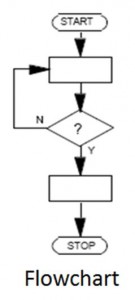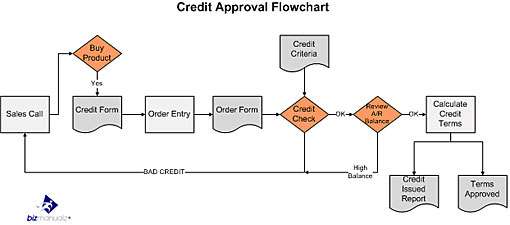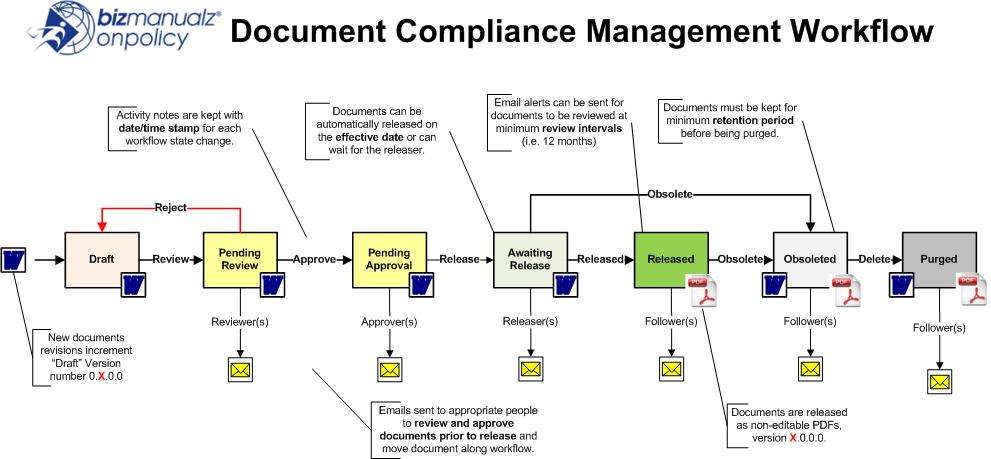What Is The Difference Between Workflow and Process Flowchart?

To understand the difference between workflow and process flowchart, you need an introduction. In order to grasp the concepts easily, delve into the sub-sections that will explain each term clearly: the explanation of workflow and the explanation of process flowchart. What is the difference between workflow and process flowchart?
Explanation of workflow
Workflows are essential for any process. They make tasks streamlined and ensure efficient execution. To understand workflows better, let’s dive into a step-by-step guide:
- Define objectives: Start by defining the goals and objectives. This’ll provide a clear direction and purpose for the tasks.
- Identify tasks: Break the overall process into smaller, manageable tasks. Each task should have a purpose and contribute to the desired outcome.
- Determine dependencies: Analyze the relationship between tasks and identify any dependencies. This’ll help in prioritizing tasks.
- Establish timelines: Set realistic timelines for each task. Take into account factors like resources and roadblocks. This will keep the workflow on track.
- Assign responsibilities: Allocate responsibilities to individuals or teams. Clearly communicate expectations to know everyone’s role.
- Monitor progress: Regularly monitor the progress of each task. Use tools or software to track progress and make adjustments if needed.
Document all steps for future reference and improvement.
Now, let’s talk more about workflows: Automation plays a big role. It reduces manual intervention and optimizes efficiency. Real-time collaboration tools enable teams to work together. Communication channels are important for successful workflow implementation.
Here’s an interesting story: A multinational company was struggling with project management due to inefficient workflows. After implementing a tailored workflow system, they achieved better outcomes.
Remember, understanding and implementing effective workflows can be beneficial for any project or process.
Explanation of process flowchart
A process flowchart is a visual tool used to communicate and improve understanding. Let’s get an insight into this helpful tool.
To comprehend better, here’s a table with the components of a process flowchart:
| Column 1 | Column 2 | Column 3 |
|---|---|---|
| Step 1 | Description of Step 1 | Inputs/Outputs associated with Step 1 |
| Step 2 | Description of Step 2 | Inputs/Outputs associated with Step 2 |
| Step 3 | Description of Step 3 | Inputs/Outputs associated with Step 3 |
The power of a process flowchart lies in these details. It shows the sequence of steps and also the inputs and outputs related to each step. This makes it easy to point out any potential bottlenecks or areas for improvement.
Pro Tip: When designing a process flowchart, keep it simple. Use language that is easy to comprehend by all stakeholders.
Similarities between workflow and process flowchart
To gain a clearer understanding of the similarities between workflow and process flowchart, consider the following. Both are visual representations of a process, providing a tangible view of its steps. Additionally, they serve as effective tools for analyzing and improving processes, offering insights into potential bottlenecks and areas for enhancement.
Both are visual representations of a process
Workflow and process flowcharts provide visual representations of a process. They depict the stages involved in performing a task or achieving a goal. These diagrams make complex processes easier to understand.
Let’s look at how similar workflow and process flowcharts are, in the following table:
| Attribute | Workflow | Process Flowchart |
|---|---|---|
| Visual portrayal | Yes | Yes |
| Step-by-step | Yes | Yes |
| Sequence | Yes | Yes |
| Task dependencies | Yes | No |
| Decision points | Yes | No |
The comparison reveals that there are many similarities between workflow and process flowcharts. They both show a process visually, provide step-by-step information, and illustrate the sequence of activities. But, there are also some differences.
Workflow diagrams often include task dependencies and decision points, which helps people understand how different tasks are related. On the other hand, process flowcharts are mainly about outlining the chronological order of activities without exploring dependencies or decision-making.
The American Society for Quality (ASQ) states that visual representations such as workflow and process flowcharts improve communication and comprehension in organizations.
Both are used to analyze and improve processes
Workflow and process flowcharts are both critical for analyzing and boosting processes. They show a visual of how tasks get done, letting organizations spot trouble spots, inefficiencies, and spaces for development. Let’s delve deeper into the similarities between these tools.
To see the commonalities between workflow and process flowcharts, let’s compare their main elements. Both charts usually have these columns:
- Task: This column details the certain activities or steps involved in a process.
- Responsible Party: In this column, the individuals or departments responsible for doing each task are recorded.
- Timeframe: This column notes the expected duration or deadline for finishing each task.
- Inputs: What is needed for each task, like info or materials, are listed here.
- Outputs: The expected outcomes or deliverables produced by completing each task are described here.
By organizing this info clearly and methodically, workflow and process flowcharts allow organizations to visualize their processes fully.
In addition to these shared elements, workflow and process flowcharts have unique features that differ between them. For instance, workflow charts often focus on noting the order tasks should be done in, highlighting the logical sequence of steps. On the other hand, process flowcharts might give a more global view of an entire process, with different decision points and potential paths.
Knowing the background behind these tools can further show their importance in improving processes. Workflow charts can be traced back to Frederick W. Taylor’s scientific management principles from the late 19th century industrial revolution. His ideas changed workplace productivity by systematically studying workflows to find spots for development.
Process flowcharts, on the other hand, have roots in industrial engineering practices that came up during WWII to refine production processes in manufacturing sectors.
All in all, workflow and process flowcharts are crucial for aiding organizations analyze and better their processes. By visually representing the tasks, duties, timeframes, inputs, and outputs involved in a process, these tools provide a full view of how work is done.
By finding trouble spots or optimizing operations, workflow and process flowcharts let organizations maximize their processes for greater effectiveness and efficiency.
Differences between workflow and process flowchart

Flow Chart Example
To understand the differences between workflow and process flowchart, delve into their definitions, purposes, level of detail, and usage. Each sub-section will shed light on the distinct aspects of these two concepts, providing you with a comprehensive understanding of how they differ in various dimensions.
Definition workflow and process flowchart
Grasping the distinctions between workflow and process flowcharts requires one to understand their respective definitions. A workflow chart indicates the steps needed to achieve an outcome. Whereas a process flowchart reveals the entire sequence of operations for a process. Here is a visual representation of these two concepts:
| Workflow Chart | Process Flowchart |
|---|---|
| Lists individual tasks and their order | Shows overall operations of a process |
| Focuses on task-level details | Displays overview of entire process |
| Emphasizes collaboration among team members | Highlights connection between stages |
| Displays decision points along the way | Illustrates dependencies and relationships |
The key point to note is that while workflow charts list individual tasks, process flowcharts provide a higher-level view of the entire procedure. Both are valuable tools for understanding and improving organizational processes.
Not grasping the differences between workflow and process flowcharts can lead to confusion, inefficiencies, and missed chances for improvement. For this reason, it is essential for any aspiring business professional or manager to understand this distinction.
Recognizing the disparities between workflow and process flowcharts permits individuals to effectively communicate ideas, optimize procedures, and drive success in today’s business environment. Don’t miss out on developing this valuable skillset!
Purpose of workflow and process flowchart
Workflows and process flowcharts have different purposes in the business world. Workflows are to outline the steps required for a task or project, providing clarity and breaking down complex processes. On the other hand, process flowcharts show the sequence of activities or events in a system, its inputs, outputs, and decision points.
Workflows help:
- Improve productivity by defining roles and responsibilities.
- Coordinate team members and facilitate communication.
- Identify bottlenecks and areas of improvement.
Process flowcharts aid:
- Analyzing existing processes.
- Finding inefficiencies.
- Proposing solutions.
- Understanding complex systems.
- Training employees on standard operating procedures.
Workflows focus on specific steps for a task or project, while process flowcharts provide an overview of a system/process. To get the most out of these tools:
- Involve all relevant stakeholders.
- Review and update regularly.
- Utilize visual elements.
Do this and you can optimize operational efficiency, drive continuous improvement, and reach organizational goals.
Level of detail
When creating a workflow or process flowchart, the level of detail can vary based on the project’s needs. Consider the granularity needed for each step and action.
To show different levels of detail, use a table with columns such as task description, inputs, outputs, and responsible parties.
For instance:
| Task Description | Inputs | Outputs | Responsible Parties |
|---|---|---|---|
| Task 1 | Input 1 | Output 1 | Person A |
| Task 2 | Input 2 | Output 2 | Person B |
| Task 3 | Input 3 | Output 3 | Person C |
At a higher level of detail, include smaller sub-tasks, extra instructions, and dependencies between tasks.
Understanding the level of detail is key for successful project management. Document all relevant information to avoid potential issues.
Don’t forget! Capture the right detail in your workflow or process flowchart. It’ll ensure smooth execution of the project.
Usage
Workflow and process flowcharts are used in many industries. They show graphically the steps of a process or workflow. Teams use them to see, study and better their processes. Bottlenecks, streamlining and efficiency can be improved.
The uses of flowcharts vary depending on the company and the project. Here are some common uses:
- Documenting complex processes;
- Analysing processes;
- Training new employees;
- Project management.
Flowcharts are also used in software development, manufacturing processes design, quality control procedures assessment, healthcare management systems optimization and more.
Governments and regulatory agencies use flowcharts for compliance too. The International Standards Organization (ISO) recommends them for documenting quality management systems (QMS). Flowcharts can help organizations streamline workflows, boost productivity and optimize processes.
Difference Between Workflow and Process Flowchart
We’ve taken a close look at the difference between a workflow and a process flowchart. Knowing the distinctions is essential for boosting organization productivity and efficiency. Here’s a summary of our key points:
- Workflow is a set of connected tasks or activities needed to reach a certain goal. It concentrates on the step-by-step process of work.
- On the other hand, a process flowchart is a visual depiction of the sequence of events in completing a task. It presents a graphical overview of the steps involved.
- A workflow diagram is more precise and specific, showing individual tasks and their dependencies. A process flowchart provides a broader picture.
- Workflow diagrams are useful for assessing and upgrading existing procedures. Process flowcharts are helpful for documenting, communicating, and teaching people on how to do a certain job.
- Both workflow and process flowcharts help organizations to maximize effectiveness and productivity.
Besides these points, it’s noteworthy to remember that being aware of the unique features of each tool will help organizations personalize their plan. By utilizing workflow diagrams for analysis and improvement, and using process flowcharts as visual aids for communication, businesses can streamline their operations.
Going forward, here are some tips on how to make use of workflow and process flowcharts effectively:
- Regularly check and update workflow diagrams to guarantee accuracy.
Frequent examination of workflow diagrams can help organizations find areas for improvement or potential issues. - Add color coding or icons in process flowcharts to make them more visually attractive and easier to understand.
Visual clues can enhance understanding, especially for complex processes that need to be communicated. - Consider incorporating automation tools into workflows highlighted in diagrams.
Automation can fast-track tasks, reduce errors, and improve overall efficiency. - Educate employees on how to interpret and use process flowcharts to guarantee consistent comprehension and application.
Training employees on the importance and practical uses of process flowcharts can help organizations facilitate seamless transitions and consistent performance.
Organizations can take advantage of these tips so they can benefit from workflow and process flowcharts to optimize their procedures and get better operational efficiency.
Frequently Asked Questions
 FAQ 1:
FAQ 1:
Q: What is a workflow?
A: A workflow is a series of steps or tasks that need to be completed in a specific order to achieve a desired outcome. It represents the overall process of getting work done and includes the actions, people, and resources involved.
FAQ 2:
Q: What is a process flowchart?
A: A process flowchart is a visual representation of the steps or activities involved in a process. It provides a clear overview of the sequence of tasks, decision points, and dependencies within a process.
FAQ 3:
Q: What is the main difference between a workflow and a process flowchart?
A: The main difference lies in their scope and level of detail. A workflow refers to the entire series of steps and actions involved in completing a task or achieving a goal, whereas a process flowchart specifically focuses on visualizing the sequence of activities within a process.
FAQ 4:
Q: How are workflow and process flowchart related?
A: A process flowchart is often used as a tool to document and analyze the workflow. It helps understand the logical flow of activities and identify areas for improvement or optimization within the larger workflow.
FAQ 5:
Q: Can a workflow exist without a process flowchart?
A: Yes, a workflow can exist without a process flowchart. Workflows can be informal or communicated through other means, such as written instructions or verbal communication. However, using a process flowchart can provide a visual representation that aids in understanding and optimizing the workflow.
FAQ 6:
Q: Can a process flowchart exist without a workflow?
A: No, a process flowchart cannot exist without a workflow. A process flowchart specifically illustrates the sequence of activities within a workflow, so a workflow is a prerequisite for creating a process flowchart.

















Leave a Reply